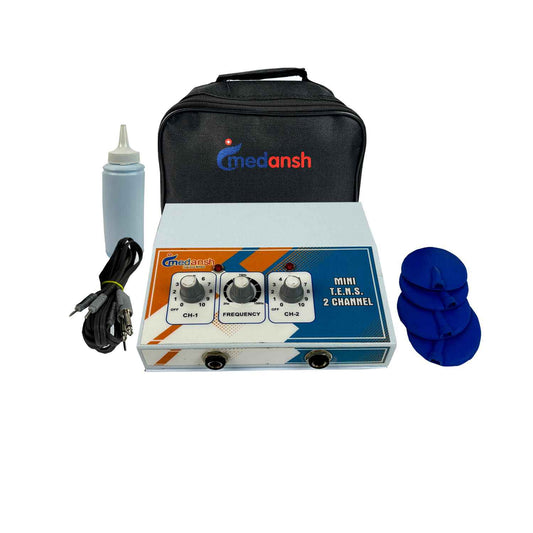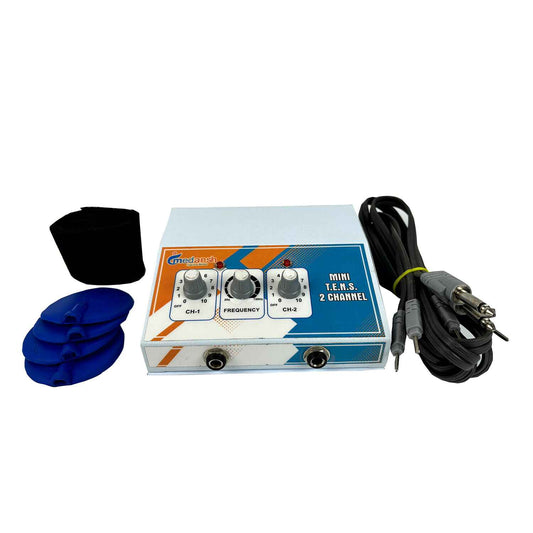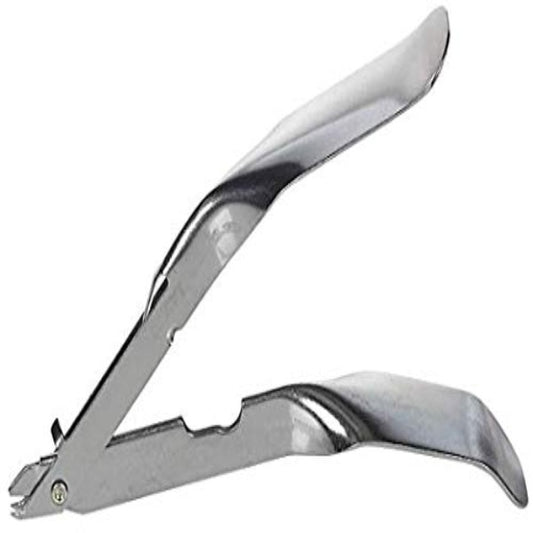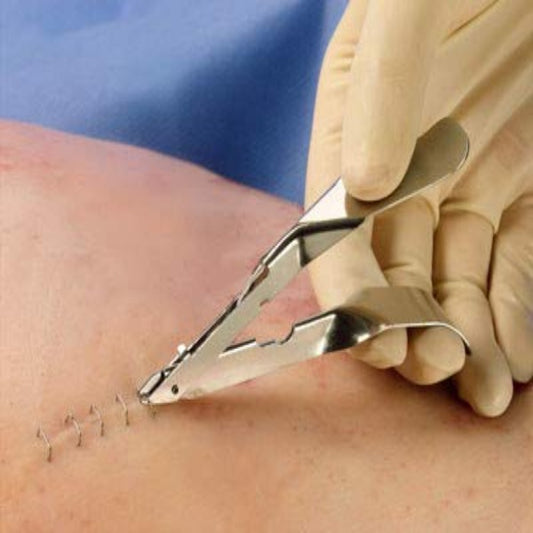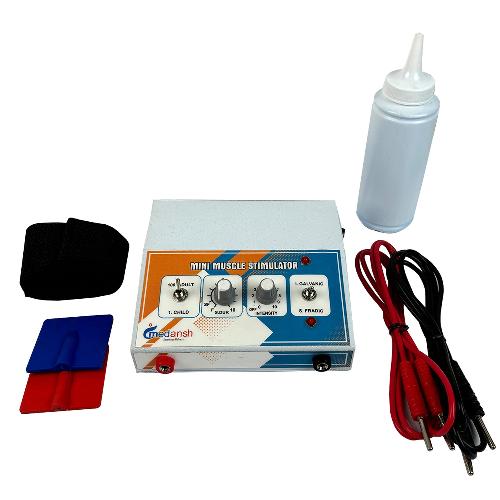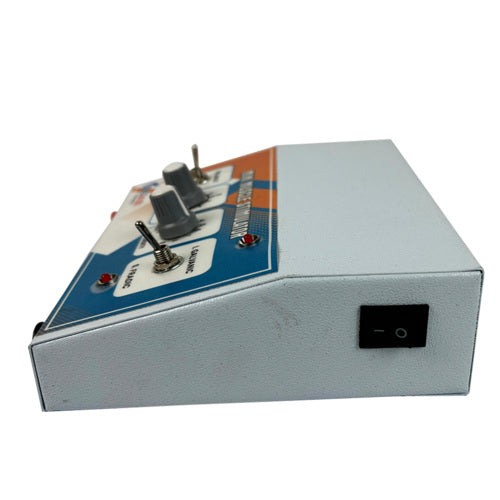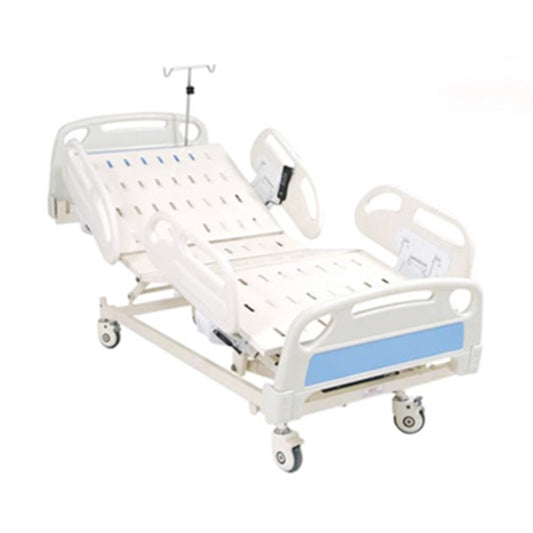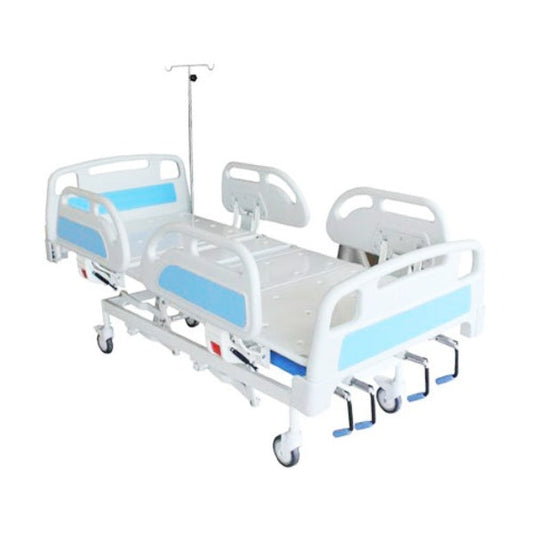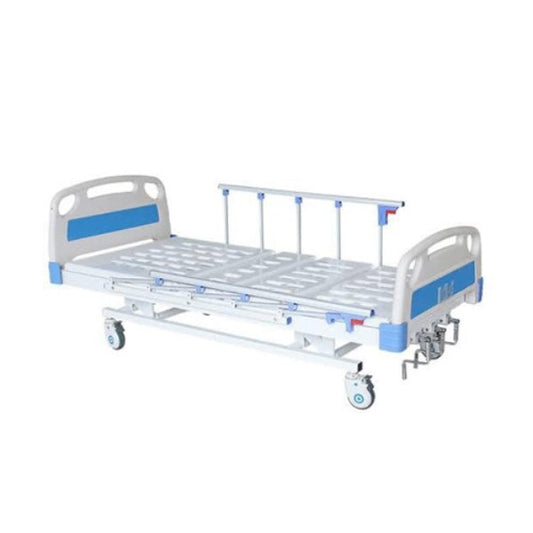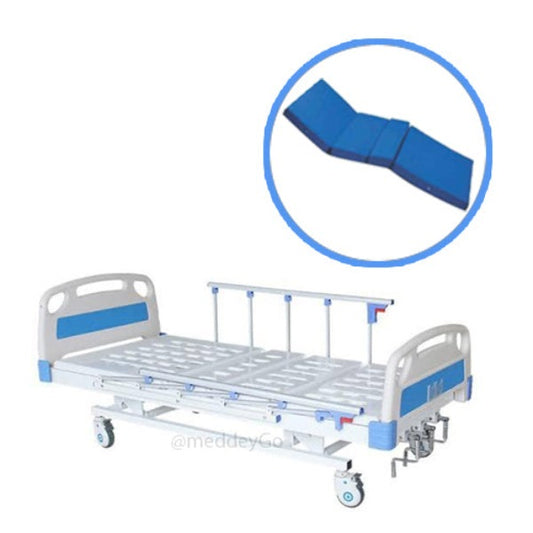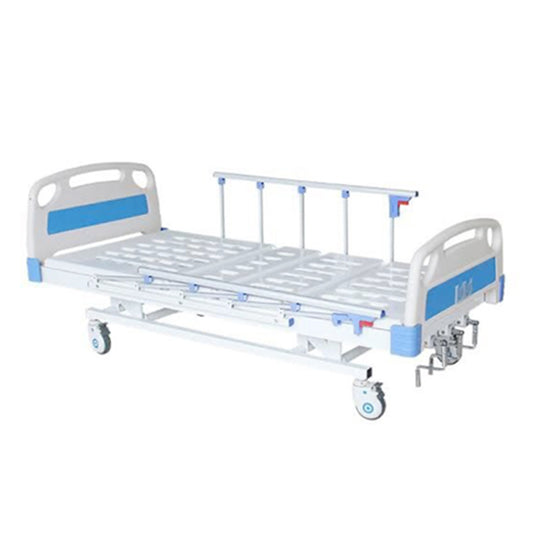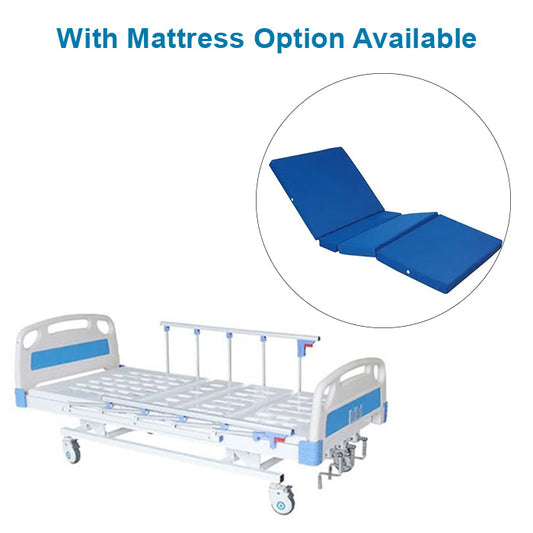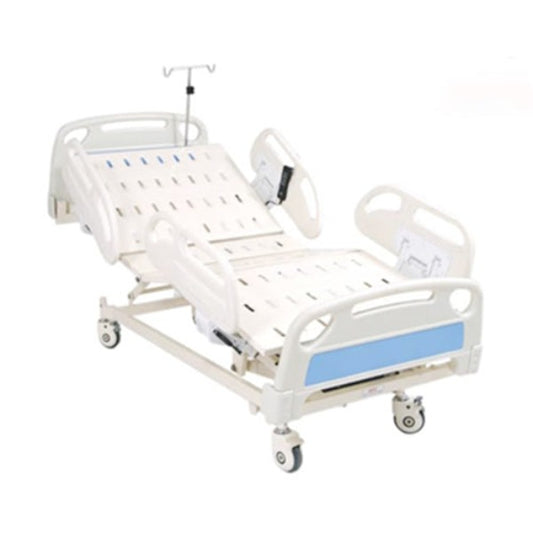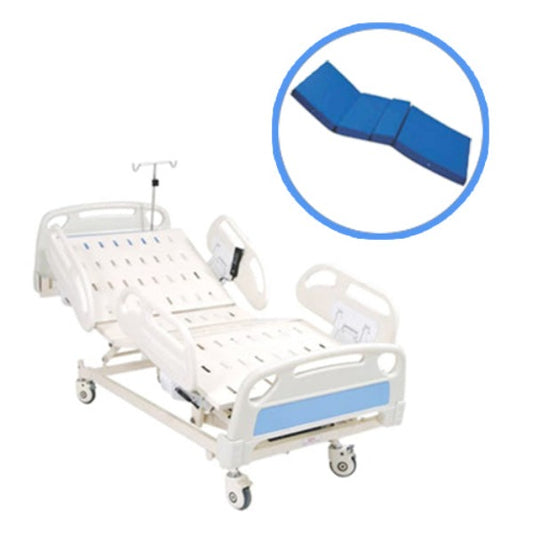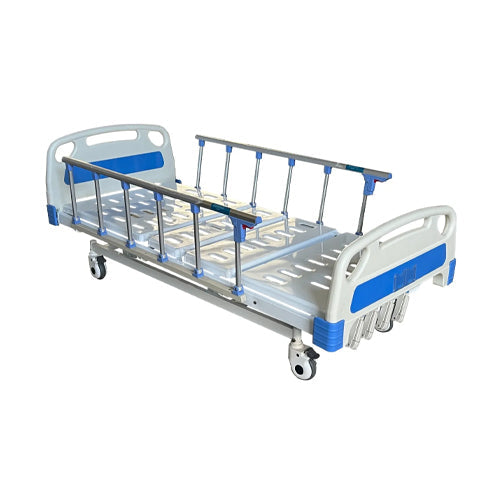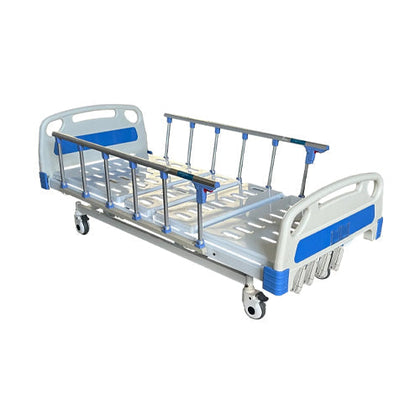-
Our ICU Bed with 5 Functions, Electric ABS Panel, and Railing is a premium medical bed designed for critically ill patients in intensive care units. It provides comfort, safety, and ease of use for both patients and healthcare professionals. Here are the key features,...
- Rs. 64,499Inclusive of all taxes
Rs. 125,000- Rs. 64,499
- Unit price
- per
Save Rs. 60,501Inclusive of all taxes
-
The ICU Hospital Bed Mechanical 5 Function is designed for optimal patient care, ensuring comfort, safety, and ease of use. Equipped with a reliable mechanical system, it is ideal for hospitals, ICUs, and clinical settings. Key Features: ✔ 5 Adjustable Functions: Backrest, knee rest,...
- Rs. 42,999Inclusive of all taxes
Rs. 79,000- Rs. 42,999
- Unit price
- per
Save Rs. 36,001Inclusive of all taxes
-
( Prepaid or Partial COD Options are available for this product. Please call or WhatsApp us at 8586012345 ) This versatile mechanical ICU bed offers multiple functions and is well-suited for hospital use.Specifications:Usage/Application : HospitalsSize/Dimension : 7*3.5ftBrand ...
- Rs. 37,499Inclusive of all taxes
Rs. 72,000- Rs. 37,499
- Unit price
- per
Save Rs. 34,501Inclusive of all taxes
-
More sizes available( Prepaid or Partial COD Options are available for this product. Please call or WhatsApp us at 8586012345 ) Our ICU Bed 5 function Mechanical With Collapsible Railings - the ultimate solution for comfortable and safe hospital stays. This bed is designed to provide...
- From Rs. 33,499Inclusive of all taxes
Rs. 55,000- From Rs. 33,499
- Unit price
- per
Save Rs. 21,501Inclusive of all taxes
-
More sizes available(Prepaid or Partial COD Options are available for this product. Please call or WhatsApp us at 8586012345.) Electric ICU Bed – Adjustable & Comfortable Designed for enhanced patient care, our Electric ICU Bed offers versatile positioning, sturdy construction, and superior comfort. With automated adjustments,...
- From Rs. 73,200Inclusive of all taxes
Rs. 135,000- From Rs. 73,200
- Unit price
- per
Save Rs. 61,800Inclusive of all taxes
Recently Viewed Products
Medansh
Example product title
- Rs. 20Inclusive of all taxes
- Rs. 20
- Unit price
- per
Inclusive of all taxes
Medansh
Example product title
- Rs. 20Inclusive of all taxes
- Rs. 20
- Unit price
- per
Inclusive of all taxes
Medansh
Example product title
- Rs. 20Inclusive of all taxes
- Rs. 20
- Unit price
- per
Inclusive of all taxes
Medansh
Example product title
- Rs. 20Inclusive of all taxes
- Rs. 20
- Unit price
- per
Inclusive of all taxes
Medansh
Example product title
- Rs. 20Inclusive of all taxes
- Rs. 20
- Unit price
- per
Inclusive of all taxes
Medansh
Example product title
- Rs. 20Inclusive of all taxes
- Rs. 20
- Unit price
- per
Inclusive of all taxes
Medansh
Example product title
- Rs. 20Inclusive of all taxes
- Rs. 20
- Unit price
- per
Inclusive of all taxes
Medansh
Example product title
- Rs. 20Inclusive of all taxes
- Rs. 20
- Unit price
- per
Inclusive of all taxes
Medansh
Example product title
- Rs. 20Inclusive of all taxes
- Rs. 20
- Unit price
- per
Inclusive of all taxes
Medansh
Example product title
- Rs. 20Inclusive of all taxes
- Rs. 20
- Unit price
- per
Inclusive of all taxes
- Choosing a selection results in a full page refresh.

